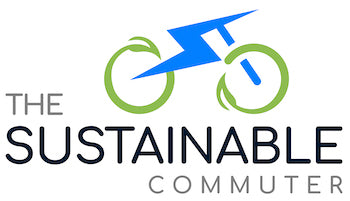
Mastering Winter Terrain: Tips and Tricks for Safely Riding E-Bikes in the Snow
Share
As e-bikes continue to grow in popularity, many riders are looking for ways to extend their riding season through the winter months. Riding an e-bike in the snow can be a fun and exhilarating experience, but it also presents some unique challenges that riders need to be aware of to stay safe. This post will explore some tips and tricks for safely riding e-bikes in the snow.
Getting Prepared for Winter Riding
When preparing for winter riding, it's important to make sure you have the right gear to keep you warm, dry, and visible. Here are some additional tips to consider:
- Wear insulated gloves and shoes to keep your extremities warm and dry.
- Wear a helmet with a visor to protect your face from snow and wind.
- Choose brightly colored or reflective clothing to make yourself more visible to other riders and vehicles.
- Bring a headlamp or other source of light to help you see in low-light conditions.
In addition to these gear tips, knowing your limits and staying within them is important. If you're not an experienced winter rider, start slowly and gradually build up your skills and confidence over time.
Mastering Riding Techniques in Snow
Riding an e-bike in the snow requires some different techniques than riding on dry ground. Here are some additional tips to help you master winter riding:
- Keep your weight evenly distributed over your wheels to maintain traction and control. Avoid leaning too far forward or back, as this can cause you to lose balance.
- When climbing hills, pedal steadily and avoid sudden bursts of speed. This will help you maintain traction and avoid slipping.
- When descending hills, use your brakes gently and avoid sudden stops or turns. Keep your weight over your back wheel to maintain control.
Navigating Challenging Winter Terrain
In addition to ice patches and snowdrifts, winter riding may also involve other obstacles like fallen branches, deep puddles, and frozen ruts. Here are some tips for navigating challenging winter terrain:
- Slow down when approaching obstacles and assess the best path to take.
- When crossing deep puddles or ruts, try to keep your weight back and your front wheel light to avoid getting stuck.
- Use caution when riding on frozen lakes or rivers. Check local safety guidelines and ice thickness before venturing out onto the ice.
Maintaining E-Bike Performance in Winter Weather
Winter weather can be tough on your e-bike, so it's important to take extra care to maintain its performance. Here are some additional tips to consider:
- Store your e-bike indoors whenever possible to protect it from the cold and moisture.
- Use a lubricant specifically designed for winter conditions to keep your chain and gears running smoothly.
- If you notice your battery life decreasing more quickly than usual, try keeping it in a warm place before and during your ride to help maintain its charge.
Final Thoughts
Riding an e-bike in the snow can be a thrilling experience, but it's important to stay safe and prepared. By following these tips and techniques, you can confidently enjoy winter riding and minimize the risk of accidents or injuries. Remember to always ride with respect for yourself, others, and the environment, and have fun exploring the winter wonderland on your e-bike!
